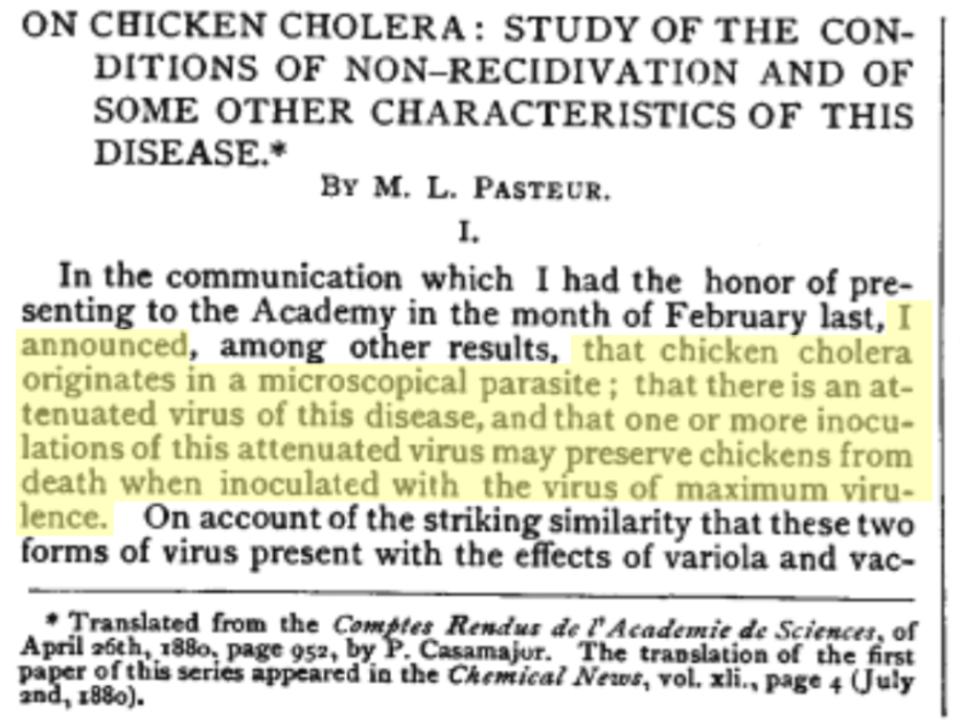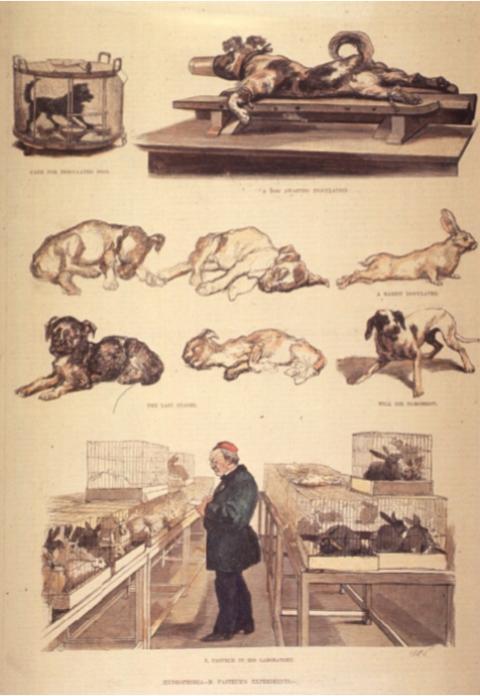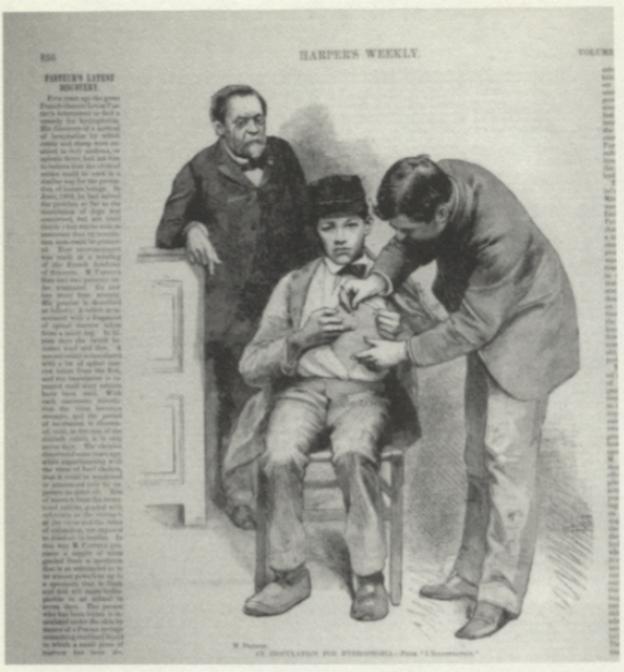Development of Vaccinations
1870s: Chicken Cholera Vaccine
Pasteur and his colleague Charles Chamberland concluded that weakened strains of the microbe enabled chickens to develop resistance to cholera.
“ To explain with brevity the results which I have to communicate, I may be allowed to use the word vaccinate, to express the act of inoculating a chicken with the attenuated virus. This being admitted, I may state, as the result of many experiments, that the effects of vaccination are very variable. Some chickens are little affected by the most virulent virus after one inoculation of the attenuated virus; others require two such inoculations, and even three. In every case, the preventive inoculation does some good, because it acts in a certain measure. Vaccination, then, may be of several degrees; but we may always succeed in completely vaccinating a chicken, which means that we can bring it to such a condition that it becomes incapable of being affected by the most virulent virus. ”
~ Louis Pasteur

On Chicken Cholera: Study of the Conditions of Non-Recidivation and Of Some Other Characteristics of this Disease, 1881, American Association for the Advancement of Science
1880s: Anthrax Vaccine
Pasteur sought to apply the same principles that they discovered with an anthrax vaccine. With the addition of scientist Émile Roux, they investigated ways to provide immunity by weakening the germ. This experiment allowed Pasteur to communicate the efficacy of his anthrax vaccine, enabling him to gain public support for his work supporting germ theory. It led to an understanding that animals could develop immunity to diseases when exposed to a weakened version of the microbe.
How Solving This Medical Mystery Saved Lives, 2020, National Geographic
1885: Rabies Vaccine
Pasteur identified the pathogen that caused rabies. He worked alongside Roux and Chamberland, who together worked to extract the pathogens from the spinal cords of rabbits infected with rabies.

Hydrophobia- M. Pasteur's Experiments, 1885, United States National Library of Medicine

Monisieur Pasteur For the Cure of Hydrophobia, 1885, Wellcome Collection

An Inoculation for Hydrophobia, 1885, Bulletin of the History of Medicine
Pasteur tested this vaccine on a human subject when he vaccinated Joseph Meister, a boy who had been attacked by a rabid dog. Meister developed immunity; he had survived.
“ On March 1st of this year, Pasteur announced to the Academy of Sciences that he had inoculated no fewer than 358 persons, many of whom had been bitten by really rabid dogs, and the others by dogs suspectedly rabid. Of these people, 100 were bitten before December 15th, and the remainder subsequently; yet all, except one, had remained in good health. ”
~ George Fleming